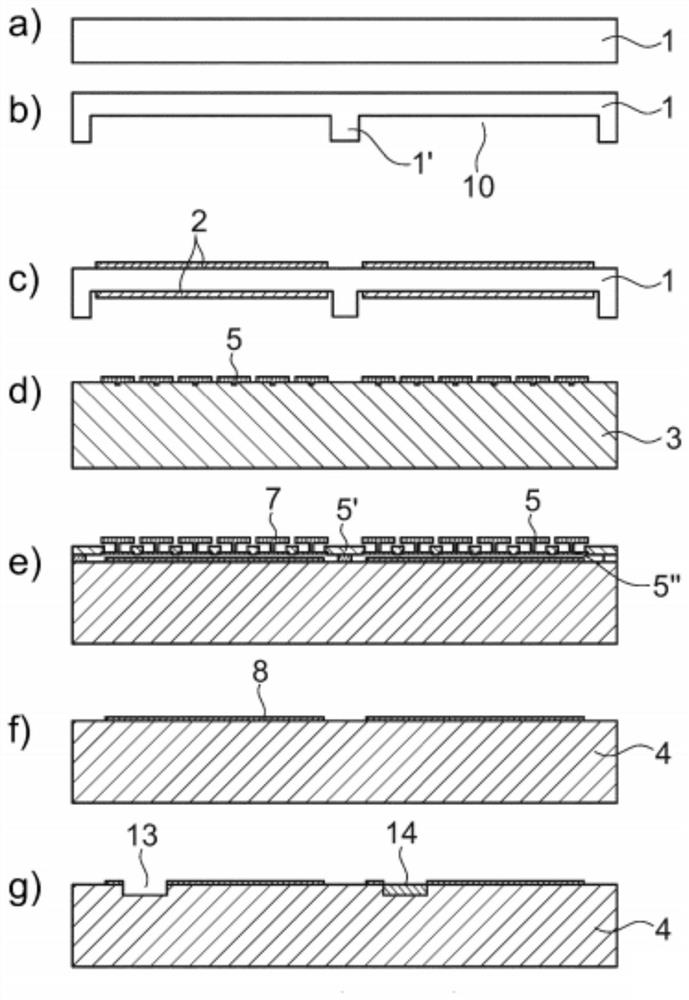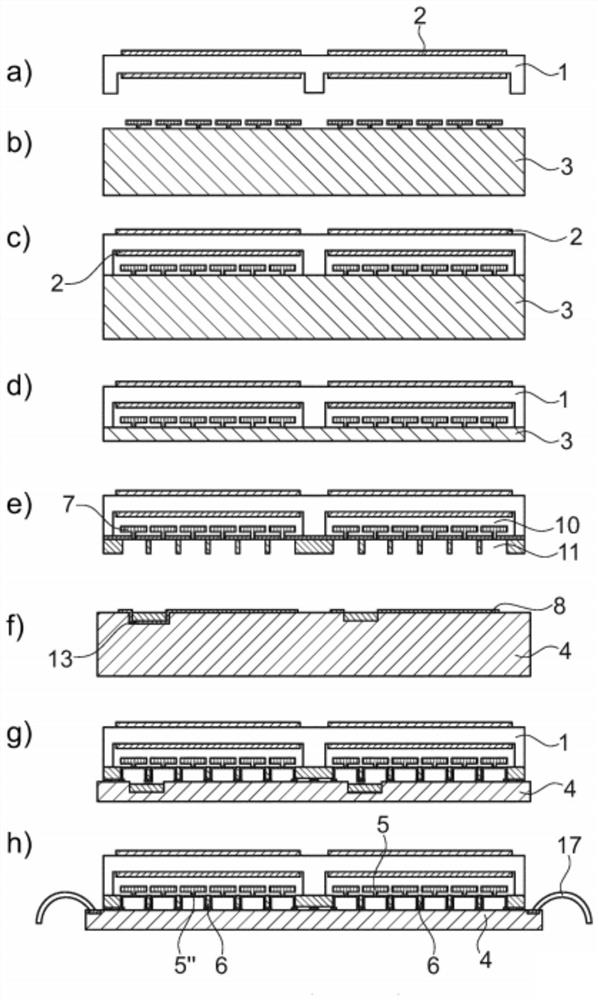Method for producing thermal infrared sensor array in vacuum-filled wafer-level housing
A sensor array, wafer-level technology, applied in the direction of electric solid-state devices, semiconductor devices, instruments, etc., can solve the problems of large lateral overall size and difficult to accommodate
- Summary
- Abstract
- Description
- Claims
- Application Information
AI Technical Summary
Problems solved by technology
Method used
Image
Examples
Embodiment Construction
[0066] It will be appreciated that only the details of various wafers are respectively shown in Figures 1 through 9, in fact, the area of these wafers is much larger, and each of which includes a plurality of as described adjacent to each other. These structures are manufactured. Single is monolithized by dividing into a separate thermal infrared sensor array.
[0067] FIG. 1 shows a basic structure of a very thin infrared sensor array in a vacuum wafer level package before the respective wafer mounting but prior to single sheet, which has an upper cover wafer 1, thinned central wafer 3 and bottom wafer 4 . In the lid wafer 1, there is a cavity 10 above a set of sensor pixels 5.
[0068] According to Figure 1, the infrared sensor array includes a plurality of groups of infrared sensor arrays having a plurality of sensor pixels 5, a narrow strip 5 ', and a cavity 10, wherein the plurality of sensor pixels 5 are adjacent to each other or four or more. The group rules are arranged,...
PUM
| Property | Measurement | Unit |
|---|---|---|
| thickness | aaaaa | aaaaa |
| thickness | aaaaa | aaaaa |
| size | aaaaa | aaaaa |
Abstract
Description
Claims
Application Information
 Login to View More
Login to View More - R&D
- Intellectual Property
- Life Sciences
- Materials
- Tech Scout
- Unparalleled Data Quality
- Higher Quality Content
- 60% Fewer Hallucinations
Browse by: Latest US Patents, China's latest patents, Technical Efficacy Thesaurus, Application Domain, Technology Topic, Popular Technical Reports.
© 2025 PatSnap. All rights reserved.Legal|Privacy policy|Modern Slavery Act Transparency Statement|Sitemap|About US| Contact US: help@patsnap.com



